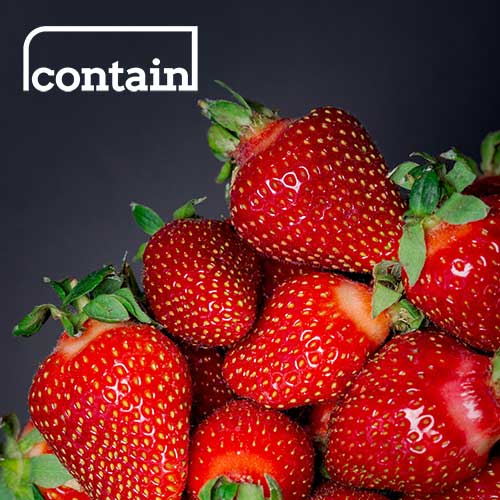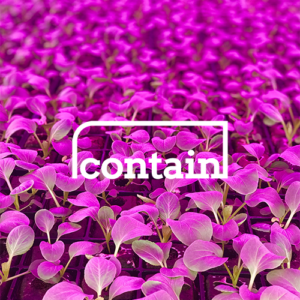April 21, 2024

Food price inflation reemerged as a topic of conversation in the past few weeks thanks to an unexpectedly high March inflation report. This was followed by news that long-anticipated interest rate cuts are likely delayed. Most of us didn’t need to be told that food price inflation persists. 92% of consumers say that “food prices have been too high for too long”.
Naturally, as a service provider to the controlled environment agriculture industry, the Contain team’s thoughts turned to the impact on indoor growers. We took a deeper dive into the stats. We have many more thoughts on the topic, but started by looking at trends in the channels that indoor veggie growers mostly serve.
Current State of Food Inflation
Firstly, let’s look at price rises over the past couple of years. Food price inflation topped out in 2022. CPI represents prices paid by consumers:
Source: BLS, figures are rounded to closest whole number
We see the same pattern when we look at the PPI index, which represents prices paid to farmers:
Source: BLS, figures are rounded to closest whole number
The USDA forecasts a 2.5% increase in all food prices in 2024. Within this, USDA forecasts food-at-home prices to rise 1.6%. Food-away-from-home prices are predicted to increase 4.1%. These are still above long term averages:
Source: BLS, we rounded figures to closest whole number
How Indoor Farmers Reach Their Customers
Americans split their food spending roughly 50/50 between eating out (food away from home) and cooking at home (food at home). Food-away-from-home expenditures accounted for 56% of total food spending in 2022.
Indoor farmers feed both channels. At the smaller end of the scale, CEA farmers frequently sell at farmer’s markets and to local restaurants. At larger commercial scale, deals with grocery chains and larger restaurant chains are more common. For the moment, we assume that indoor farms are mostly selling higher end produce. Vertical farmer Plenty’s crispy lettuce sells at $1/oz at Wholefoods, for instance. That’s a 20% premium over Wholefoods’ Organic Sweet Baby Lettuces.
Restaurant Channel
Restaurants are seeing margin reductions and shifts in their customer bases from inflation. The impact is not just from higher food costs, but also from rising minimum wages. Most (61%) restaurants expect to raise prices again in 2024, even as they recognize that consumers have hit their tolerance limits for such increases. Footfall for quick service restaurants dropped 3.5% YOY in the first quarter. In turn, this is encouraging more use of tech:
Consumers are downgrading where they dine. 57% of consumers say they plan to spend less this year on dining out, carry out, and food delivery services. Olive Garden, a Darden Restaurants chain, has recently seen a shift in its customer base, with more affluent consumers frequenting their restaurants. This change comes as lower-income consumers have started to cut back on spending at such establishments, especially since the end of February 2024. During a recent earnings call, Rick Cardenas, Darden’s CEO, noted that while there has been a reduction in visits from households earning below $75,000, there was an increase in transactions from those with incomes above $150,000.
“All You Can Eat” is going away. Many Las Vegas casinos closed their buffets during COVID, and reopened with food halls instead. For instance, the well-known buffets at Mandalay Bay, The Mirage, Planet Hollywood Las Vegas, Harrah’s Las Vegas, Flamingo, Paris Las Vegas, and The Stratosphere have all permanently closed.
Plant based is now mainstream. According to a 2023 survey by the Plant Based Food Association (PBFA), nearly half (48.4%) of restaurants in the US now offer plant-based food options. The figure has grown by 62% over the last decade. 40% of consumers plan to purchase plant-based meat products in 2023. This interest is not only limited to vegetarians or vegans but extends to a broader demographic seeking healthier and more sustainable eating options.
Tech is big for fast food. Larger corporates are experimenting with everything from AI for kitchen operations to cooking robots to manage costs. Starbucks, for instance, is investing an additional $450m in new equipment “designed to boost efficiency and reduce complexity”. Examples include its Siren System which aids in customization of beverages and warm food. Elsewhere, McKinsey expects that “new technologies (such as autonomous delivery robots), improved routing, and the ability to batch or “stack” multiple orders” will help to control burgeoning food delivery app costs.
Overall impact on indoor farmers: good if you’re supplying mid-range chains or fast food, or can ride the plant-based trend.
Grocery Stores
The impact of inflation on veggie purchases isn’t straightforward. Industry media The Produce Reporter notes that produce demand remained healthy even as food price inflation ignited. While inflation does affect pricing and influence consumer choices, it doesn’t necessarily lead to a straightforward decrease in veggie purchases. Instead, consumers may adjust their buying habits, opting for different types or quantities of vegetables based on price changes, the season and their personal or household budget constraints.
Here’s what we’re seeing in the grocery channel:
Consumers are buying less. Just under one in three consumers say they are buying only the essentials when it comes to food shopping. Deloitte’s Food frugality index measures behaviors associated with financial stress at the grocery store. A higher index means more stress.
Source: Deloitte, figures are rounded to closest whole number
This measure suggests that stress is leveling out, though others – like credit card debt – tell a different story.
Consumers are trading down. Traditionally, consumers trade down to less pricey options at the grocery store during recessions. For instance, we might buy store brand rather than branded products. In 2023, private-brand dollar sales increased by a whopping 6.7% in the food and beverage category. Nearly three quarters of shoppers are trading down in meat.
Consumers are switching stores. Consumers are also modifying shopping habits by opting for stores that offer better value. This includes shopping at wholesale clubs and convenience stores, where they can find lower prices or better bulk deals compared to traditional grocery stores. The growth of spending in these channels is significantly higher than in other retail formats such as drugstores or big-box stores, according to consultant McKinsey.
Overall impact on indoor farmers: good if you have cost-effective or unique offerings. Not great if own brand alternatives are available.

Indoor Ag’s New Reality: Practical Advice from Investment Banker Adam Bergman

Plenty Unlimited bankruptcy dominates March’s indoor ag news, overshadowing new farm plans

80 Acres Farms secures $115m, Square Roots expands to Japan, and indoor ag sees farm shakeups in February

Robobees take flight, vanilla goes vertical, and a new IPO is on the horizon in indoor agriculture’s January

Canadian Agriculture Grants: 7 Funding Opportunities for Indoor Farming in 2025

Indoor Ag Outlook: Funding Trends and 2025 Projections

Oishii’s Latest Funding Round, Bitcoin Mining and More Cannabis Woes in November 2024

Bowery Farming Closes, While Vertical Cotton Farming Gets Backing, in October 2024

BrightFarms & Plenty Ag open new farms in September

A Staple of Manufactured Housing: Champion Homes

Blending Sustainability with Practicality: The Method Homes Approach to Modular Housing
